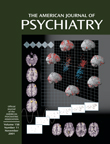This is a highly specialized book, and for those in the process of setting up dementia clinics or memory disorder programs it will be very useful. With the increasing longevity of the world population, there is a clear need for clinical programs that can assess, diagnosis, and treat people with dementia and memory impairments. The care of the patient with dementia is similar to that of the patient with schizophrenia in that it is best to have a team involved in diagnosis and management. Members of the team include a medical dementia specialist (usually a geriatrician, neurologist, or psychiatrist), primary care physician, radiologist, neuropsychologist, psychologist, social worker, nurse, occupational and speech therapist, and, often, clergy. It is to potential members of this multidisciplinary team that the book is directed.
Each of the chapters is well written, complete, and informative. However, the chapters that concern specific specialists will serve as nice but unnecessary reviews for them. For example, “Differentiation of the Common Dementias” will be of little interest for a dementia specialist but would be very informative for a social worker, nurse, radiologist, etc. In this sense, the book would be very educational for the staff of a dementia clinic because it would assure a similar critical knowledge base for the whole staff.
There are chapters on administration and organization; information management; medical assessment; psychiatric assessment; laboratory, radiological, and neurophysiological investigations; neuropsychological assessment; the role of the speech and language therapist; functional assessment; and computerized cognitive assessment. There is an excellent chapter on age-related memory impairment. Management is covered by nice chapters on the role and support of the caregiver, pharmacological treatment, and nonpharmacologic treatment as well as a fairly comprehensive overview of the management of common problems such as aggression, wandering, sleep disturbance, and ethical issues. Each chapter has a comprehensive bibliography. There is a very interesting and useful appendix, which consists of demographic data about the dementia clinics of the contributors to the book. As the contributors represent 12 clinics in North America, nine in the United Kingdom, and six from the rest of Europe, the data on clinic staffing, data and assessment instruments, and patient load and characteristics are very useful for those planning a new clinic. This book would be of use to any dementia or geriatric clinic; it is directed at a multidisciplinary audience and in this sense would also be a good text for trainees who are thinking of working with geriatric populations.

